Well-being
Develop an understanding of the ways well-being is promoted by connecting traditional practices and social foundations.
To begin, select a category from the menu.
Incorporating traditional beliefs and contemporary perspectives, this activity explores the concept of well-being, as expressed through storytelling. The behaviour of animals in nature is often used to view or interpret human characteristics.
Through close community ties, Susie has come to enjoy the northern Cree community she calls home.

She values her relationship with Laura, the grandmother of a little boy in her class. As a mentor, Laura continues to help her navigate their Cree ways.

A community tea dance is being planned, and Laura asks Susie to join. When Susie inquires about the date, Laura enigmatically replies, “Can’t say exactly when — it’ll be when the leaves are off the trees.” Susie has come to understand and appreciate that nature’s cycles determine much of what happens on the reserve. Although Susie would like to go, she says she is too swamped with schoolwork at this time of year to drop everything at a moment’s notice. Laura responds with a story.
“You have heard me talk about the otter and the important role he holds in our lives. Come, and look at Steven’s leggings. See the ribbon work pattern? This design represents the nature of the otter, and how he moves in nature. Look closely, and you can follow his tracks: he takes three steps, and then he slides … three steps and then he slides! This little otter can teach us something important about balance in life, don’t you think?”

“In Cree culture, we teach with stories. It is a lot of fun for both the teller and the listener. Would you like to hear more of little otter adventures? As you listen to the Shoshone tale “Beaver Builds a Slide,” consider whether you relate more to the otter or to the beaver …”
Reflection Statement
In First Nations, Métis and Inuit worldviews, well-being is achieved through living a balanced life. The concept of balance refers to all aspects of our being: spirit, mind, heart and body. Indigenous Peoples have long gathered throughout the changing seasons to commemorate and celebrate occasions based on this belief in balance. Through stories, the oral tradition provides an understanding of the importance of living a balanced life in harmony with nature.
How would understanding this notion of well-being and balance impact your teaching practice?
Métis Elder Victor Prinz, now passed, talks about how First Nations, Métis and Inuit in healthy communities live and play together.
The speakers in these interviews demonstrate holistic approaches to wellness through balancing traditional and mainstream worldviews and roles.
Select a video.
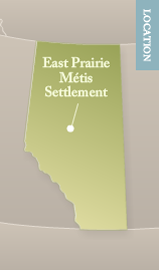
Victor Prinz | Métis | East Prairie Métis Settlement
Métis Elder Victor Prinz talks about how First Nations, Métis and Inuit in healthy communities live and play together.
While Victor Prinz passed in 2008, we are privileged and honoured to still have his words to share.
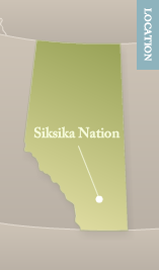
Alic Weasel Child | Siksika | Siksika Nation
Elder Alice Weasel Child recounts how she and her husband opened their home to young people over the years, sharing food and cultural activities as part of their community role.
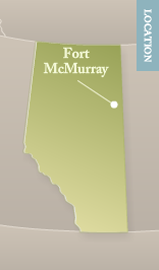
Rita Marten | Woodland Cree | Mikisew Cree First Nation
Rita Marten speaks in Cree as she remembers celebrations involving drumming and dancing in the summers when she returned home from residential school. English subtitles are available.

Daphne Marie Big Eye | Siksika | Siksika Nation
Daphne shares what she understands is part of healthy well-being: a spiritual practice and a sense of humour.
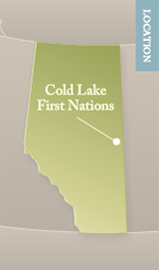
Marie Adam | Dene | Cold Lake First Nations
Marie Adam speaks about her efforts to balance the First Nations and the Western lifestyles — to live in both worlds.
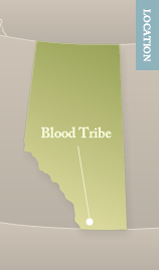
Wilton Goodstriker | Kainai | Blood Tribe
Elder Wilton Goodstriker talks about Kainai parents’ hopes that their children’s schooling will complement teachings from home and assist in the development of a whole person.
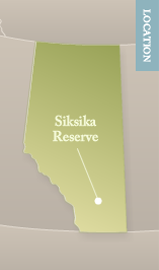
Influence of Blackfoot Culture on Western Thought
The question, “How has Blackfoot culture influenced Western thought?” guided research by Narcisse Blood and Ryan Heavy Head of Red Crow Community College. After uncovering first-hand knowledge of how young Abraham Maslow was influenced by his stay in 1938 with the Siksika People, Ryan Heavy Head and Narcisse Blood developed a presentation that shows Maslow missed something important that would have explained why such a large number of the Siksika people were self-actualized. These video excerpts are from a two-hour presentation at the University of Alberta in November 2010. Other presentations on this topic can be accessed online at Red Crow Community College.
While Narcisse Blood passed in 2015, we are privileged and honoured to still have his words to share.
Select a resource type from the list.
Web Links
While some First Nations, Métis and Inuit experts have recommended these web links, they are not authorized by Alberta Education.
Indicators of Well-Being in Canada
This website provides statistics on national and regional First Nations, Métis and Inuit populations.
Social Challenges: The Well-being of Aboriginal People. Canadian Council on Social Development
This website provides information on the over-representation of Aboriginal people in the criminal justice system.
Are We Seeking Pimatsiwin or Creating Pomewin? Implications for Water Policy
Pimatisiwin in Cree is broadly defined as “to create the good life.” Through examination of historical and contemporary policies involving Aboriginal peoples, readers come to understand how Colonial policies have created a disconnect between Aboriginal peoples and their sacred relationship to water. Seeking Pimatsiwin or Creating Pomewin? Implications for Water Policy attempts to repair the relationships between Aboriginal people and mainstream society by focusing on the sacred relationship that the Cree have with water and how this relationship and worldview can restore ethical relations between and amongst people and the environment. Included in this article is a framework for repairing relationships.
Documents
While some First Nations, Métis and Inuit experts have recommended these documents, they are not authorized by Alberta Education.
The Sacred Circle. Education Is Our Buffalo. Alberta Teachers’ Association
The circle reminds us that a balanced life includes four elements: mental, physical, emotional and spiritual. This excerpt from Education Is Our Buffalo provides an overview of the medicine wheel, the sacred circle and the four sacred plants.
All My Relations. Aboriginal Perspectives
Each First Nation, Métis or Inuit community expresses its own laws of relationships in ceremonies, protocols and other cultural practices. This excerpt from Aboriginal Perspectives (Aboriginal Studies 10) summarizes the most significant principles as laws of nature, laws of sacred life and laws of mutual support.
Cycles of Life. Aboriginal Perspectives
This three-page excerpt from Aboriginal Perspectives (Aboriginal Studies 10) presents the cycle of life and the medicine wheel, which guides people in maintaining balance and harmony.
The Power of Powwow
What is the significance of powwow dancing today? That is the question Dianne Meili asks many contemporary dancers. In this excerpt, Dianne shares some of the responses made by Alberta powwow dancers.
Traditional Medicine and Restoration of Wellness Strategies
This literature review focuses on the topic of traditional medicine and indigenous knowledge as protective factors for at-risk Aboriginal populations and communities. In looking at the current state of traditional medicine and indigenous knowledge, factors impacting the retention of traditional medicine and indigenous knowledge are discussion and recommendations to ensure the recovery and continuation of traditional medicine and indigenous knowledge are shared.
Métis Identity: Sharing Traditional Needs
This article represents an overview of a traditional knowledge project with Métis Elders from across Canada, initiated by the Métis Centre at the National Aboriginal Health Organization. It is a collaboration between a Métis researcher and one of the Métis Elders who participated in the national and regional Métis Elders’ Gatherings over a four-year period. Based upon a collaborative presentation at the 2006 Healing Our Spirit Worldwide conference, the authors present their experiences as participants in this unique initiative, as shared by the group of Métis Elders, seniors and healers with whom they engaged. From the knowledge made available through this process, factors that contribute to Métis identity, health, healing and wellness are identified and further explored. The foundations for the article rest on the following themes identified by project participants: health and healing by Métis through listening to ancestral voices; a return to the Michif language; a greater awareness of the significance of the role of Métis women and family to the health of communities; a better understanding of the centrality of our relationship to the environment for individual and community health and wellness; and an awareness of historical, cultural and Aboriginal language perspectives for understanding traditional cultural practices and protocols.
Select a video from the list.
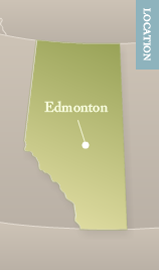
Warrior: The Stan Daniels Healing Centre
This documentary explores the history of the Stan Daniels Healing Centre in Edmonton and its impact on Aboriginal justice. Over the last 20 years, the Stan Daniels Healing Centre has helped countless men leave prison and return to their families and communities in a healthy way. Warrior is a story about self-determination and the will to make change that started in the early days of Native Brotherhoods in correctional institutions and continues today in an organization that fulfills the vision of its leaders. Reconnection with culture and empowerment of Aboriginal organizations can have a positive impact. Bearpaw Media Productions of Native Counselling Services produced this video in 2005 with funding from the Alberta Law Foundation.
Bearpaw Media Productions of native Conselling services produced this video in 2005 with funding from Native Counselling Services of Alberta.
Métis in the Wabasca-Desmarais Community
Bigstone Cree Elders Nora Yellowknee, Michael Beaver, Albert Yellowknee and Métis Elder George D. Auger discuss aspects of the relationship between Bigstone Cree Nation members and the Métis of the Wabasca-Desmarais area with Pauline Auger. They share old stories of local individuals and economic relations between them.
Video recorded at the Kapaskwatinak Cultural Education Centre, located on the Bigstone Cree Nation, November 21, 2012 as part of the research for the Wabasca Community Stewardship Project. Gerald Auger assisted with the video recording.
In Aboriginal communities, humor plays a major role in our lives and it is part of the language. Stories are quite often told with some humor in them. When one understands the nuances of Aboriginal languages and cultures, you just know that jesting and teasing is going on. Sometimes, it is difficult to translate the nuances of the humour so the listeners will not get the wrong impression of what is being said.
In the video you will hear a lot of laughter as Elder George D. Auger share a story from when he was a young boy living with his Grandmother.
Here is a summary of story.
Otto, a German, who was farmer and planted his own tobacco, Elder George D. Auger, thinks that Otto had some kind of deal with my grandmother. (The listener is left to make their own conclusions at the meaning of this statement.)
Elder George D. Auger lived with his grandmother; just the two of them and sometimes George would see a boat coming across the lake.
Otto would bring cabbage and some tobacco because that was what he grew. He would bring them for his grandmother. George’s grandmother used to smoke a pipe, so she was very happy when Otto brought her some tobacco.
As a child, Elder George D. Auger, used to play on the sunny side of the lake. Otto would give him some candy. Elder George D. Auger was so happy with it but now thinks it was just to keep me busy. (Again the listener can make their own conclusion as to why.)
Nora summarized that trading and bartering were common methods of trading dry fish for food; however it is now illegal.